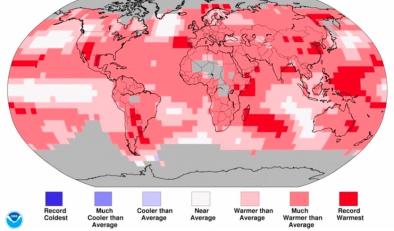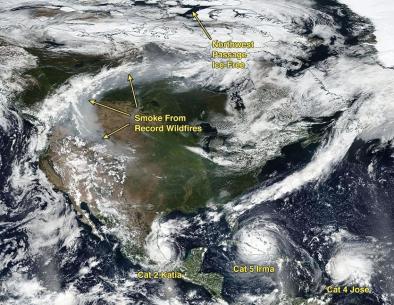March 2017: Earth's 2nd Warmest March on Record

March 2017 was the planet's second warmest March since record keeping began in 1880, said NOAA's National Centers for Environmental Information (NCEI) on Friday; NASA also rated March 2017 as the second warmest March on record. The only warmer March was just last year, in 2016. Remarkably, March 2017 ranked as the fourth warmest month (expressed as the departure of temperature from average) of any month in the global historical record in the NASA database, and was tied for fifth warmest month in NOAA’s database—despite coming just two months after the end of a 5-month long La Niña event, which acted to cool the globe slightly. The extreme warmth of January 2017 (tenth warmest month of any month in NASA’s database), February 2017 (fifth warmest) and March 2017 (fourth warmest) gives 2017 an outside chance of becoming Earth’s fourth consecutive warmest year on record--if a moderate or stronger El Niño event were to develop by summer, as some models are predicting.
The top three warmest months on record since 1880 (expressed as departure from the 1951 - 1980 average) in the NASA database all occurred during the strong El Niño event of 2015 - 2016, which worked to raise global air temperatures by exporting heat from the oceans. Here are the top six warmest months since 1880 (expressed as the departure of temperature from average), in the NASA database:
February 2016: 1.32°C above average
March 2016: 1.28°C above average
January 2016: 1.13°C above average
March 2017: 1.12°C above average
February 2017: 1.10°C above average
December 2015: 1.10°C above average
Related Content






